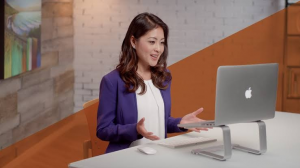“I started talking, and then I kept talking, and then I lost my point and didn’t know how to stop. And then I felt like an idiot.”
Does this sound like you—at least sometimes? Many of us struggle to be concise—especially when we get nervous.
But What About Tacos?
I’ll use use the PRES frame (below) to talk concisely about tacos. PRES is simple and easy to use. It prevents you from getting lost in a muddle when speaking.
P: Point
Begin with the key point: “I believe tacos are the best food around.”
R: Reason
Explain what drives your comment: “The reason I think that is because tacos are inexpensive, full of protein, come in many flavors, and are delicious.”
E: Example
Provide an example to expand on why your comment is important: “For example, my family ate take-out tacos from our favorite restaurant on Sunday. We ordered five different kinds, the kids loved them, and we spent a fraction of what it would cost for a fancier meal.”
S: Summary
Reiterate your main point: “In summary, tacos are the best food around because they are inexpensive, taste great, and are nutritious!”
PRES: A Non-Taco Example
Now that you are familiar with the four parts, check out this more elaborate example:
P: Point
Begin with the key point: “The best use of our $30,000 would be to contract an on-call technical producer for online workshops.”
R: Reason
Explain what drives your comment: “A technical producer troubleshoots from behind the scenes to ensure that online meetings go right. We’ve noticed that participants are much more satisfied when we’ve used a technical producer.”
E: Example
Provide an example to expand on why your comment is important: “For example, Facilities has been presenting a series of online training sessions using a producer. We’ve recruited volunteers for that role, and surveyed meeting participants. People reported 75% more satisfaction with online experiences when a producer was used.”
S: Summary
Reiterate your main point: “In summary, we believe that the best use of the would be to hire an on-call technical producer to improve our delivery of online workshops across the organization.”
The PRES frame makes it easy it is to make a concise point and succinctly support its rationale. Try using it the next time you present. Then, consider rewarding your conciseness with a taco or two!



 Most staff participate in an average of 15 meetings a week, and 71% of senior managers say that meetings are unproductive.
Most staff participate in an average of 15 meetings a week, and 71% of senior managers say that meetings are unproductive.
 A few years ago, Adam Bryant of the New York Times interviewed 525 diverse CEOs. These leaders came from all walks of life and many ethnicities, but they all seemed to share five definitive characteristics.
A few years ago, Adam Bryant of the New York Times interviewed 525 diverse CEOs. These leaders came from all walks of life and many ethnicities, but they all seemed to share five definitive characteristics.
